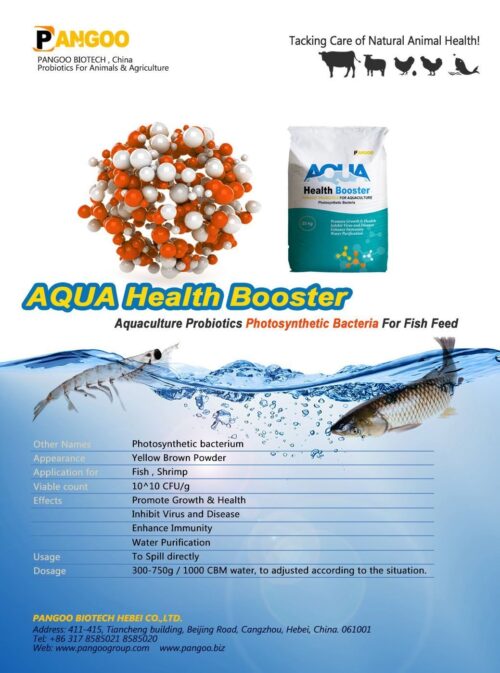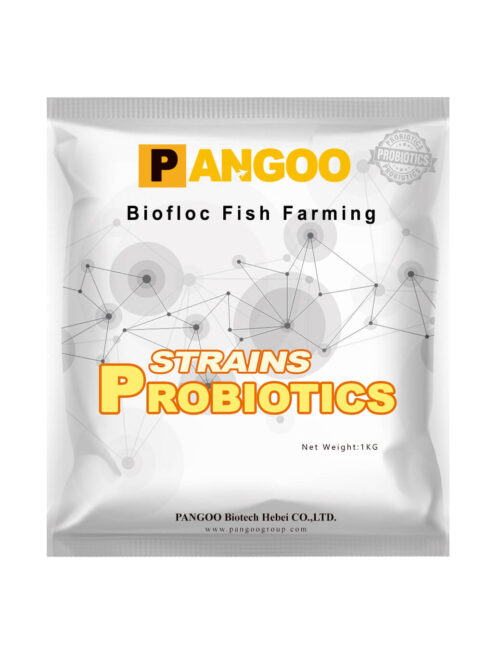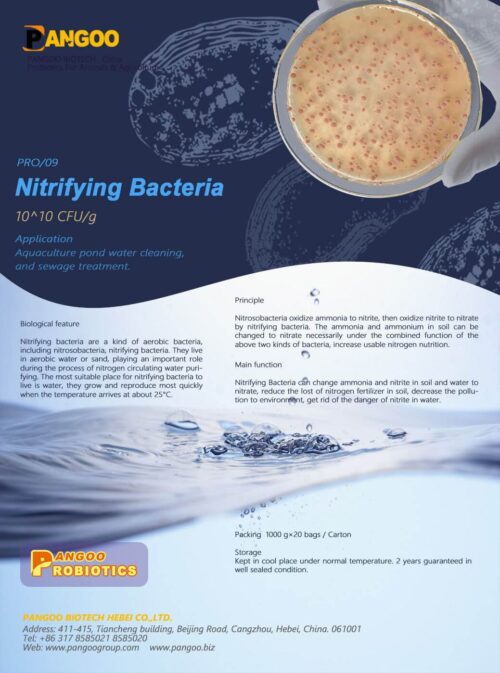Aquaculture is an ever-evolving field that continues to seek sustainable and efficient practices for raising fish and shellfish. Among the innovations, the use of probiotic bacteria stands out as a pivotal advancement. The integration of beneficial microbes into aquatic environments can lead to healthier and more robust marine life, enhancing the overall productivity of aquaculture systems.
| Benefit | Description |
|---|---|
| Improved Gut Health | Probiotics contribute to a balanced gut flora, better digestion. |
| Enhanced Water Quality | Beneficial bacteria help maintain clean water, reducing diseases. |
| Disease Prevention | Natural immunity boosters from probiotics ward off infections. |
| Sustainable Aquaculture Enhancement | Probiotics support eco-friendly farming practices. |
| Optimized Feed Efficiency | Microorganisms improve nutrient uptake from feed. |
Table 1: Benefits of Probiotic Bacteria in Aquaculture.
The introduction of probiotic bacteria into aquaculture systems is a game-changing strategy. Aquaculture probiotics consist of select strains of bacteria such as Bacillus and Lactic Acid Bacteria that, when administered in adequate amounts, benefit the host by improving water quality, promoting growth, and enhancing resistance to disease. Probiotic bacteria work by competing with pathogenic bacteria, producing substances that inhibit their growth, or by stimulating the immune system of the aquatic animals.

The use of these live microorganisms is not just about disease control; it's also about creating an optimal environment for aquatic life to thrive. For instance, photosynthetic bacteria, such as those found in products like Aqua Photosynthetic Bacteria, play a crucial role in bioremediation, breaking down organic waste and promoting a balanced ecosystem within fish ponds and tanks.
One of the primary benefits of introducing beneficial microbes in aquaculture is the enhancement of gut health among aquatic organisms. A healthy gut microbiota is essential for efficient food digestion and nutrient absorption. Probiotic supplements like Aqua Health Booster and Aquaculture Yeast influence the gut's microbial balance, leading to increased feed utilization and growth rates. Moreover, probiotic bacteria such as Enterococcus faecium, detailed in Enhancing Aquaculture Health with Enterococcus faecium, are revered for their capacity to fortify the digestive tract, hence contributing to the overall vitality of cultured species.
Disease outbreaks in aquaculture can be devastating, leading to significant economic losses. Probiotic bacteria present a natural and sustainable solution to this perennial problem. By maintaining a healthy balance of microbes within aquaculture systems, probiotics like those explored in Probiotics for Fish Farming: A Sustainable Solution play a crucial role in disease prevention. These live microorganisms act as immune boosters, stimulating the fish's natural defense mechanisms. The detailed examination of specific strains such as Bacillus probiotics and their effects on health are addressed in Unveiling the Benefits of Bacillus Probiotics in Aquaculture.

Bioremediation is the process whereby biological agents are used to clean up environmental contaminants. In the realm of aquaculture, probiotic bacteria such as nitrifying bacteria are indispensable. These bacteria, which can be sourced from Nitrifying Bacteria products, function by converting harmful ammonia into nitrites, and then into less harmful nitrates, ensuring a healthier habitat for fish and other aquatic life. Additionally, biofloc technology, which is detailed in Revolutionizing Aquaculture: A Comprehensive Guide to Biofloc Fish Farming, utilizes probiotic bacteria to recycle waste nutrients into feed, thereby reducing pollution and improving water quality.
The move towards sustainable aquaculture practices has been significantly influenced by the application of probiotic bacteria. These beneficial microbes contribute to creating a more eco-friendly aquaculture environment by reducing the need for chemical treatments and promoting natural growth. The impact of sustainable practices on aquaculture is discussed in detail in The Application of Lactic Acid Bacteria in Aquaculture. Sustainable aquaculture is not only better for our ecosystem but also benefits the consumer by providing naturally healthier seafood options, as highlighted in Exploring Aqua Probiotic Health Benefits.
A significant advantage of using probiotics in aquaculture is the optimization of feed efficiency. Beneficial bacteria, such as those included in BioAqua supplements, can enhance the digestion process and nutrient absorption, leading to better feed conversion ratios. Improved feed efficiency not only boosts the growth rates of fish but also decreases feed costs.
Algal blooms, which can create toxic conditions for marine life, are an ongoing challenge in aquaculture. Effective control is paramount to the health of the ecosystem and the success of aquaculture operations. Probiotic bacteria offer a natural solution to this issue. Through the competitive exclusion of harmful algae, probiotics found in products like AN Pond Cleaner and PH Conditioner can help manage and even prevent algal outbreaks.
| Factor | Description |
|---|---|
| Strain specificity | Different strains have specific effects on the ecosystem. |
| Dosage and frequency of application | Correct dosage and frequency are crucial for effectiveness. |
| Water temperature and pH levels | These parameters can affect probiotic activity. |
| Presence of other microbial communities | Interactions with existing microbes can influence outcomes. |
| Nutrient load in the water | High nutrients can impact the balance of microbial activity. |
Table 2: Factors Influencing the Efficacy of Probiotic Bacteria in Aquaculture.
Shrimp farming is a significant part of the aquaculture industry, and the health of these crustaceans is paramount for productivity. Probiotics specifically designed for shrimp, like those found in Shrimp Probiotics, have been shown to improve growth rates, feed conversion, and resistance to stress and disease. These microbial supplements offer a sustainable way to enhance the overall well-being of shrimp populations.

Their benefits and practical applications are discussed in works such as Photosynthetic Bacteria in Aquaculture, which describe how specific bacteria also improve water quality for shrimp, creating a more conducive environment for growth.
Probiotic bacteria are not only administered as separate treatments but can also be an integral component of aquaculture diets. Microbial supplements embedded in feed products like Feed Starter serve a dual purpose of nourishing the aquatic species while simultaneously delivering beneficial bacteria to their gut.
In addition to promoting gut health and nutrient uptake, these supplements also play an essential role in the modulation of the host's immune system. The interplay between diet and microbe-derived products can significantly influence the health and growth of fish and shrimp, lending credence to the holistic approach to aquaculture health management.
Different species in aquaculture respond uniquely to probiotic bacteria, which is why tailored strains are often used for specific types like fish, shrimp, and shellfish. An in-depth understanding of these dynamics comes from research like The Application of Nitrifying Bacteria in Aquaculture, where the nuances of bacterial impact on different aquatic organisms are examined. These microbial interactions with the host's immune system are not just beneficial in preventing disease but can also help in faster recovery post-infection, reflecting the adaptability of probiotic treatments according to the needs of various species.
| Species | Beneficial Probiotic Strains | Effect on Health |
|---|---|---|
| Fish | Lactobacillus, Bacillus, Enterococcus | Enhance immunity, promote growth, and reduce stress. |
| Shrimp | Nitrobacter, Nitrosomonas, Bacillus spp. | Improve survival rates, water quality, and feed efficiency. |
| Shellfish | Pseudomonas, Streptococcus, Roseobacter | Aid in disease resistance and gut health. |
Table 3: Probiotic Strains and Their Specificity for Different Aquaculture Species.
The future of aquaculture lies in forward-thinking practices that embrace sustainability and eco-friendliness. Probiotics as a natural, renewable resource represent a significant part of this vision. Upcoming innovations in probiotic formulation, targeting, and application methods will undoubtedly push the boundaries of aquaculture efficiency and productivity. Articles like Unveiling the Benefits of Bacillus Probiotics in Aquaculture provide glimpses into these future possibilities. Moreover, the continued exploration of synergies between different strains of probiotics and aquaculture species will lead to even more customized and effective health solutions. Whether dealing with bacterial infections, environmental stressors, or enhancing growth, the potential of probiotics in aquaculture remains vast and largely untapped.
Photosynthetic bacteria represent a cutting-edge development in aquaculture probiotics. Their unique ability to utilize light to break down waste materials and promote nutrient cycling is explained in detail in Photosynthetic Bacteria in Aquaculture. This not only amplifies the health of the aquatic ecosystem but also ensures a more sustainable practice by reducing the reliance on artificial inputs. Through the use of such revolutionary products, we can look forward to a new era of aquaculture, one that delivers higher yields, healthier marine life, and greater environmental harmony.
Harnessing the power of photosynthetic bacteria in aquaculture offers a suite of benefits. These organisms work by converting light energy into chemical energy, facilitating the breakdown of toxic waste products like ammonia and sulfides into non-toxic substances. Through this, they dramatically improve the water quality, leading to a healthier environment for aquatic species.
| Advantage | Description |
|---|---|
| Reduction of harmful waste substances | They decrease the presence of toxic waste in the water. |
| Enhancement of natural water purification processes | Photosynthetic bacteria aid in the overall purification of water. |
| Provision of additional nutrients for aquatic organisms | They supply nutrients essential for aquatic life. |
| Improvement of oxygen levels in water | Higher oxygen levels support healthier marine life. |
Table 4: Advantages of Using Photosynthetic Bacteria in Aquaculture.
On a larger scale, the integration of probiotics into fish farming operations must be strategic and based on thorough research. Articles like Exploring Aqua Probiotic Health Benefits provide insights into the far-reaching impacts of probiotics on fish health, including how they can enhance survival rates and optimize conditions for growth and reproduction.

Large-scale operations also need to consider the economic aspects of implementing probiotics. Not only do they have the potential to improve the quality and yield of the fish, but they can also reduce the need for expensive veterinary interventions and chemical treatments, resulting in overall cost savings.
The successful implementation of probiotics in aquaculture hinges on following best practices that ensure the maximum benefit of these microbial additions. This includes choosing the right strains of probiotic bacteria specific to the fish or shrimp species being cultured, ensuring the dosage and method of application are optimal for the specific aquaculture system, regular monitoring of water parameters to gauge the effectiveness of the probiotics, and maintaining good husbandry practices to support the probiotic activity. Conducting regular reviews of probiotic strategies to adapt to environmental changes and improve practices based on the latest research is also important.
Each species in aquaculture has specific requirements that can be addressed by tailor-made probiotic formulations. For instance, Aqua Health Booster may be formulated to target the health requirements of species such as tilapia or catfish, while specialized probiotics for shrimp are developed to cope with the distinct challenges faced in shrimp farming.
| Aquaculture Species | Probiotic Benefit |
|---|---|
| Tilapia | Enhanced growth rates and feed utilization |
| Catfish | Improved resistance to pathogens |
| Shrimp | Better survival rates under stressful conditions |
Table 5: Selected Probiotic Benefits by Aquaculture Species.
The mounting interest in probiotics for aquaculture reflects a broader move toward natural, sustainable agricultural practices. As fish and shellfish consumers become more health-conscious, the demand for products like Golden Shell and Sea Cucumber Booster, which promise enhanced health benefits without chemical residues, continues to grow. This trend is supported by extensive research into the effectiveness of probiotics in improving fish health and environmental sustainability, ensuring that the future of aquaculture is both green and productive.
The extensive exploration of probiotic bacteria in aquaculture has elucidated a clear path forward for enhancing the industry's sustainability and productivity. From the specific benefits provided by strains tailored to certain species to the broad-reaching improvements in water quality and disease resistance, it's evident that probiotics hold the key to a healthier, more robust aquaculture environment. As the aquaculture industry continues to evolve, probiotics will undoubtedly play an even more integral role in shaping its future. The sustainable, natural approach to enhancing the health and productivity of aquatic life is already showing promise, propelling the sector towards a more responsible and efficient future. By harnessing the power of these microscopic allies, a healthier marine ecosystem and a resilient food source for generations to come are guaranteed.